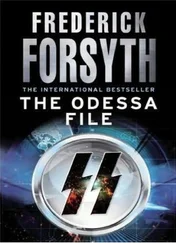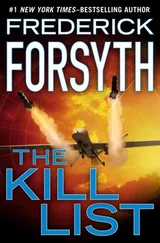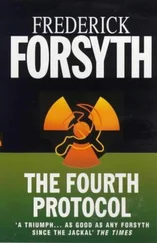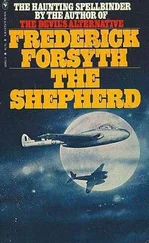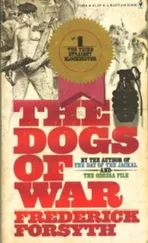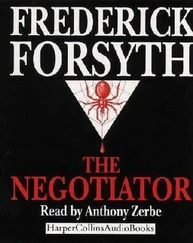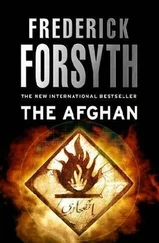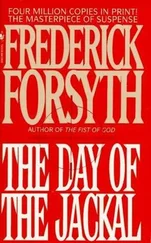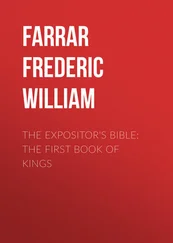Frederic Forsyth - The Cobra
Здесь есть возможность читать онлайн «Frederic Forsyth - The Cobra» весь текст электронной книги совершенно бесплатно (целиком полную версию без сокращений). В некоторых случаях можно слушать аудио, скачать через торрент в формате fb2 и присутствует краткое содержание. Жанр: Триллер, на английском языке. Описание произведения, (предисловие) а так же отзывы посетителей доступны на портале библиотеки ЛибКат.
- Название:The Cobra
- Автор:
- Жанр:
- Год:неизвестен
- ISBN:нет данных
- Рейтинг книги:5 / 5. Голосов: 1
-
Избранное:Добавить в избранное
- Отзывы:
-
Ваша оценка:
- 100
- 1
- 2
- 3
- 4
- 5
The Cobra: краткое содержание, описание и аннотация
Предлагаем к чтению аннотацию, описание, краткое содержание или предисловие (зависит от того, что написал сам автор книги «The Cobra»). Если вы не нашли необходимую информацию о книге — напишите в комментариях, мы постараемся отыскать её.
The Cobra — читать онлайн бесплатно полную книгу (весь текст) целиком
Ниже представлен текст книги, разбитый по страницам. Система сохранения места последней прочитанной страницы, позволяет с удобством читать онлайн бесплатно книгу «The Cobra», без необходимости каждый раз заново искать на чём Вы остановились. Поставьте закладку, и сможете в любой момент перейти на страницу, на которой закончили чтение.
Интервал:
Закладка:
In fact, he could not have been safer. Invisibly tailed on arrival and during his stay, he was now being invisibly escorted to the airport. As the limo left the suburbs behind, he checked again, just in case of an optical illusion. No illusion. It was there, right on top. A cream manila envelope. It was addressed simply to "Papa." THE BRITISH-CREWED MV Balmoral was fifty miles off Ascension when she met her Royal Fleet Auxiliary. As with most of the older RFAs, she was named after one of the Knights of the Round Table, in this case Sir Gawain. She was at the tail end of a long career at her specialty, resupply at sea, known as RAS, or "razzing." Or "coopering."
Out of sight of any prying eyes, the two ships made the transfer, and the SBS men came aboard.
The Special Boat Service, based very discreetly on the coast of Dorset, England, is far smaller than the U.S. Navy SEAL unit. There are seldom more than two hundred "badged" personnel. Though ninety percent drawn from the Royal Marines, they operate like their American cousins on land, sea or in the air. They operate in mountains, deserts, jungles, rivers and the open ocean. And there were just sixteen of them.
The CO was Major Ben Pickering, a veteran of over twenty years. He had been one of the small team who witnessed the massacre of Talib prisoners by the Northern Alliance at the fort of Qala-i-Jangi, northern Afghanistan, in the winter of 1991. He was still a teenager back then. They lay on top of the wall of the fortress looking down on the bloodbath as the Uzbeks of General Dostum slaughtered their prisoners following the Taliban revolt.
One of two CIA special operatives also present, Johnny "Mike" Spann, had already been killed by the Taliban prisoners, and his colleague Dave Tyson had been snatched. Ben Pickering and two others went down into the hellhole, "slotted" the three Taliban holding the American and dragged Tyson out of there.
Major Pickering had done time in Iraq, Afghanistan (again) and Sierra Leone. He also had extensive experience in interception of illegal cargoes at sea, but he had never before commanded a detachment on board a covert Q-ship, because since the Second World War it had never been done.
When Cal Dexter, ostensibly a servant of the Pentagon, had explained the mission at the SBS base, Major Pickering had gone into a huddle with his CO and the armorers to work out what they needed.
For at-sea interceptions, he had chosen two 8.5-meter rigid inflatables, called RIBs, and had picked the "arctic" version. It would take eight men sitting upright in pairs behind the CO and the coxswain, who would actually drive it. But he could also take on board a captured cocaine smuggler, two experts from the "rummage crews" of HM customs and two sniffer dogs. They would follow the attack RIB at a more sedate pace so as not to upset the dogs.
The rummage men were the experts in finding secret compartments, slithering through the lowest holds, detecting cunning deceptions aimed at hiding illegal cargoes. The dogs were cocker spaniels, trained not only to detect the odor of cocaine hydrochloride through several layers of covering but to detect changes in air odor. A bilge that has been opened recently smells different from one not opened for months.
Major Pickering stood beside the captain on the open wing of the bridge of the Balmoral and saw his RIBs swung gently onto the deck of the freighter. Thence, the Balmoral's own derrick took over the cradles and lowered the inflatables into their hold.
Of the SBS's four Sabre Squadrons, the major had a unit from M Squadron, specializing in Marine Counter-Terrorism, or MCT. These were the men who swung aboard after the RIBs, and after them their "kit."
It was voluminous, involving assault carbines, sniper versions, handguns, diving equipment, weather- and sea-proof clothing, grapnel hooks, scaling ladders and a ton of ammunition. Plus two American communications men to liaise with Washington.
Support personnel consisted of armorers and technicians, to maintain the RIBs in perfect working order, and two helicopter pilots from the Army Air Corps, plus their own maintenance engineers. Their concern was the small "chopper" that came aboard last. It was an American Little Bird.
The Royal Navy might have preferred a Sea King or even a Lynx, but the problem was the size of the hold. With rotors spread, the larger helicopters would not fit through the hatch cover to emerge from its belowdecks hangar into the open air. But the Boeing Little Bird could. With a main rotor span of just under twenty-seven feet, it would pass through the main hatch, which was forty feet wide.
The helo was the one piece that could not be winched across the gap of choppy sea separating the two vessels. Freed of its swathes of protective canvas under which it had ridden down to Ascension Island, it took off from the foredeck of the Sir Gawain, circled twice and settled on the closed foreward hatch of the Balmoral. When the two rotors, main and tail, ceased to turn, the nimble little helicopter was hefted by the on-deck derrick and lowered carefully into the enlarged hold, where she was cleated to the deck beneath her.
When there was finally nothing left to transfer and the Balmoral's fuel tanks were full again, the vessels parted. The RFA would go back north to Europe, the now very dangerous Q-ship would head for her first patrol station, north of the Cape Verdes, in the mid-Atlantic between Brazil and the curve of failed states running along the West African seaboard.
The Cobra had divided the Atlantic into two, with a line running north-northeast from Tobago, easternmost of the Antilles, to Iceland. West of that line he designated, in terms of cocaine destination, "Target Zone USA." East of the line was "Target Zone Europe." The Balmoral would take the Atlantic. The Chesapeake, about to meet her supply ship off Puerto Rico, would take the Caribbean. ROBERTO CARDENAS stared at the letter long and hard. He had read it a dozen times. In the corner, Julio Luz was trembling.
"It is from the rogue, Vega?" he queried nervously. He was seriously wondering whether he was going to get out of the room alive.
"It has nothing to do with Vega."
At least the letter explained, without saying so, what had happened to his daughter. There would be no revenge on Vega. There was no Vega. Never had been. There was no freelance baggage handler at Barajas Airport who had picked the wrong suitcase in which to plant his cocaine. There never had been. The only reality was twenty years in an American jail for his Letizia. The message in the replica envelope to the ones in which he used to send his own was simple. It said:
"I think we should talk about your daughter Letizia. Next Sunday, at 4 p.m., I will be in my suite under the name of Smith at the Santa Clara Hotel, Cartagena. I shall be alone and unarmed. I shall wait one hour. Please come."
CHAPTER 9
THE U.S. NAVY SEALS BOARDED THEIR Q-SHIP ONE hundred miles north of Puerto Rico, where the supply vessel had herself been loaded at Roosevelt Roads, the U.S. base on that island.
The SEALs are at least four times larger than the British SBS. Their parent group, the Naval Special Welfare Command, contains twenty-five hundred personnel, of which just under a thousand are "badged" operatives and the rest support units.
The ones who wear the coveted trident emblem of a SEAL are divided into eight teams, each with three forty-man troops. It was a platoon of half that number that had been assigned to live on the MV Chesapeake, and they came from SEAL Team 2 based on the East Coast at Little Creek, Virginia Beach.
Their CO was Lt. Cdr. Casey Dixon, and, like his British opposite number out in the Atlantic, he, too, was a veteran. As a young ensign, he had taken part in Operation Anaconda. While the SBS man was in northern Afghanistan watching the slaughter at Qala-i-Jangi, Ensign Dixon had been Al Qaeda hunting in the Tora Bora White Range when things went badly wrong.
Читать дальшеИнтервал:
Закладка:
Похожие книги на «The Cobra»
Представляем Вашему вниманию похожие книги на «The Cobra» списком для выбора. Мы отобрали схожую по названию и смыслу литературу в надежде предоставить читателям больше вариантов отыскать новые, интересные, ещё непрочитанные произведения.
Обсуждение, отзывы о книге «The Cobra» и просто собственные мнения читателей. Оставьте ваши комментарии, напишите, что Вы думаете о произведении, его смысле или главных героях. Укажите что конкретно понравилось, а что нет, и почему Вы так считаете.

